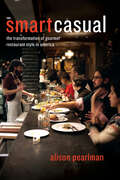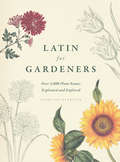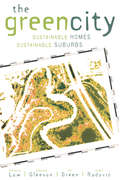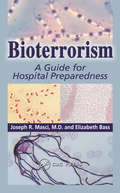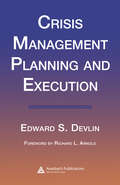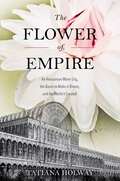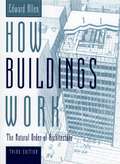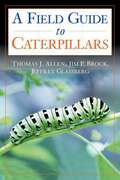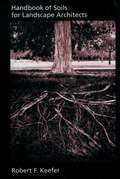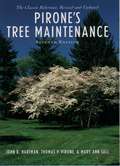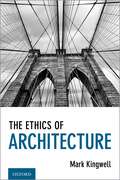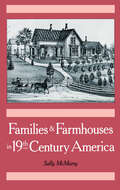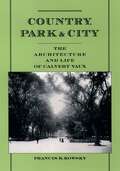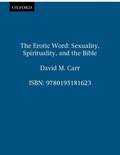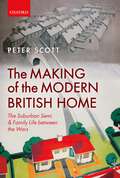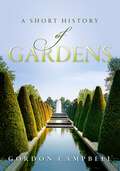- Table View
- List View
Smart Casual: The Transformation of Gourmet Restaurant Style in America
by Alison PearlmanFine dining and the accolades of Michelin stars once meant chandeliers, white tablecloths, and suited waiters with elegant accents. The stuffy attitude and often scant portions were the punchlines of sitcom jokes—it was unthinkable that a gourmet chef would stoop to plate a burger or a taco in his kitchen. And yet today many of us will queue up for a seat at a loud, crowded noodle bar or eagerly seek out that farm-to-table restaurant where not only the burgers and fries are organic but the ketchup is homemade—but it’s not just us: the critics will be there too, ready to award distinction. Haute has blurred with homey cuisine in the last few decades, but how did this radical change happen, and what does it say about current attitudes toward taste? Here with the answers is food writer Alison Pearlman. In Smart Casual: The Transformation of Gourmet Restaurant Style in America, Pearlman investigates what she identifies as the increasing informality in the design of contemporary American restaurants. By design, Pearlman does not just mean architecture. Her argument is more expansive—she is as interested in the style and presentation of food, the business plan, and the marketing of chefs as she is in the restaurant’s floor plan or menu design. Pearlman takes us hungrily inside the kitchens and dining rooms of restaurants coast to coast—from David Chang’s Momofuku noodle bar in New York to the seasonal, French-inspired cuisine of Alice Waters and Thomas Keller in California to the deconstructed comfort food of Homaro Cantu’s Moto in Chicago—to explore the different forms and flavors this casualization is taking. Smart Casual examines the assumed correlation between taste and social status, and argues that recent upsets to these distinctions have given rise to a new idea of sophistication, one that champions the omnivorous. The boundaries between high and low have been made flexible due to our desire to eat everything, try everything, and do so in a convivial setting. Through lively on-the-scene observation and interviews with major players and chefs, Smart Casual will transport readers to restaurants around the country to learn the secrets to their success and popularity. It is certain to give foodies and restaurant-goers something delectable to chew on.
Smart Casual: The Transformation of Gourmet Restaurant Style in America
by Alison PearlmanFine dining and the accolades of Michelin stars once meant chandeliers, white tablecloths, and suited waiters with elegant accents. The stuffy attitude and often scant portions were the punchlines of sitcom jokes—it was unthinkable that a gourmet chef would stoop to plate a burger or a taco in his kitchen. And yet today many of us will queue up for a seat at a loud, crowded noodle bar or eagerly seek out that farm-to-table restaurant where not only the burgers and fries are organic but the ketchup is homemade—but it’s not just us: the critics will be there too, ready to award distinction. Haute has blurred with homey cuisine in the last few decades, but how did this radical change happen, and what does it say about current attitudes toward taste? Here with the answers is food writer Alison Pearlman. In Smart Casual: The Transformation of Gourmet Restaurant Style in America, Pearlman investigates what she identifies as the increasing informality in the design of contemporary American restaurants. By design, Pearlman does not just mean architecture. Her argument is more expansive—she is as interested in the style and presentation of food, the business plan, and the marketing of chefs as she is in the restaurant’s floor plan or menu design. Pearlman takes us hungrily inside the kitchens and dining rooms of restaurants coast to coast—from David Chang’s Momofuku noodle bar in New York to the seasonal, French-inspired cuisine of Alice Waters and Thomas Keller in California to the deconstructed comfort food of Homaro Cantu’s Moto in Chicago—to explore the different forms and flavors this casualization is taking. Smart Casual examines the assumed correlation between taste and social status, and argues that recent upsets to these distinctions have given rise to a new idea of sophistication, one that champions the omnivorous. The boundaries between high and low have been made flexible due to our desire to eat everything, try everything, and do so in a convivial setting. Through lively on-the-scene observation and interviews with major players and chefs, Smart Casual will transport readers to restaurants around the country to learn the secrets to their success and popularity. It is certain to give foodies and restaurant-goers something delectable to chew on.
Smart Casual: The Transformation of Gourmet Restaurant Style in America
by Alison PearlmanFine dining and the accolades of Michelin stars once meant chandeliers, white tablecloths, and suited waiters with elegant accents. The stuffy attitude and often scant portions were the punchlines of sitcom jokes—it was unthinkable that a gourmet chef would stoop to plate a burger or a taco in his kitchen. And yet today many of us will queue up for a seat at a loud, crowded noodle bar or eagerly seek out that farm-to-table restaurant where not only the burgers and fries are organic but the ketchup is homemade—but it’s not just us: the critics will be there too, ready to award distinction. Haute has blurred with homey cuisine in the last few decades, but how did this radical change happen, and what does it say about current attitudes toward taste? Here with the answers is food writer Alison Pearlman. In Smart Casual: The Transformation of Gourmet Restaurant Style in America, Pearlman investigates what she identifies as the increasing informality in the design of contemporary American restaurants. By design, Pearlman does not just mean architecture. Her argument is more expansive—she is as interested in the style and presentation of food, the business plan, and the marketing of chefs as she is in the restaurant’s floor plan or menu design. Pearlman takes us hungrily inside the kitchens and dining rooms of restaurants coast to coast—from David Chang’s Momofuku noodle bar in New York to the seasonal, French-inspired cuisine of Alice Waters and Thomas Keller in California to the deconstructed comfort food of Homaro Cantu’s Moto in Chicago—to explore the different forms and flavors this casualization is taking. Smart Casual examines the assumed correlation between taste and social status, and argues that recent upsets to these distinctions have given rise to a new idea of sophistication, one that champions the omnivorous. The boundaries between high and low have been made flexible due to our desire to eat everything, try everything, and do so in a convivial setting. Through lively on-the-scene observation and interviews with major players and chefs, Smart Casual will transport readers to restaurants around the country to learn the secrets to their success and popularity. It is certain to give foodies and restaurant-goers something delectable to chew on.
Smart Casual: The Transformation of Gourmet Restaurant Style in America
by Alison PearlmanFine dining and the accolades of Michelin stars once meant chandeliers, white tablecloths, and suited waiters with elegant accents. The stuffy attitude and often scant portions were the punchlines of sitcom jokes—it was unthinkable that a gourmet chef would stoop to plate a burger or a taco in his kitchen. And yet today many of us will queue up for a seat at a loud, crowded noodle bar or eagerly seek out that farm-to-table restaurant where not only the burgers and fries are organic but the ketchup is homemade—but it’s not just us: the critics will be there too, ready to award distinction. Haute has blurred with homey cuisine in the last few decades, but how did this radical change happen, and what does it say about current attitudes toward taste? Here with the answers is food writer Alison Pearlman. In Smart Casual: The Transformation of Gourmet Restaurant Style in America, Pearlman investigates what she identifies as the increasing informality in the design of contemporary American restaurants. By design, Pearlman does not just mean architecture. Her argument is more expansive—she is as interested in the style and presentation of food, the business plan, and the marketing of chefs as she is in the restaurant’s floor plan or menu design. Pearlman takes us hungrily inside the kitchens and dining rooms of restaurants coast to coast—from David Chang’s Momofuku noodle bar in New York to the seasonal, French-inspired cuisine of Alice Waters and Thomas Keller in California to the deconstructed comfort food of Homaro Cantu’s Moto in Chicago—to explore the different forms and flavors this casualization is taking. Smart Casual examines the assumed correlation between taste and social status, and argues that recent upsets to these distinctions have given rise to a new idea of sophistication, one that champions the omnivorous. The boundaries between high and low have been made flexible due to our desire to eat everything, try everything, and do so in a convivial setting. Through lively on-the-scene observation and interviews with major players and chefs, Smart Casual will transport readers to restaurants around the country to learn the secrets to their success and popularity. It is certain to give foodies and restaurant-goers something delectable to chew on.
Latin for Gardeners: Over 3,000 Plant Names Explained and Explored
by Lorraine HarrisonSince Latin became the standard language for plant naming in the eighteenth century, it has been intrinsically linked with botany. And while mastery of the classical language may not be a prerequisite for tending perennials, all gardeners stand to benefit from learning a bit of Latin and its conventions in the field. Without it, they might buy a Hellebores foetidus and be unprepared for its fetid smell, or a Potentilla reptans with the expectation that it will stand straight as a sentinel rather than creep along the ground. An essential addition to the gardener’s library, this colorful, fully illustrated book details the history of naming plants, provides an overview of Latin naming conventions, and offers guidelines for pronunciation. Readers will learn to identify Latin terms that indicate the provenance of a given plant and provide clues to its color, shape, fragrance, taste, behavior, functions, and more. Full of expert instruction and practical guidance, Latin for Gardeners will allow novices and green thumbs alike to better appreciate the seemingly esoteric names behind the plants they work with, and to expertly converse with fellow enthusiasts. Soon they will realize that having a basic understanding of Latin before trips to the nursery or botanic garden is like possessing some knowledge of French before traveling to Paris; it enriches the whole experience.
The Green City: Sustainable Homes, Sustainable Suburbs
by Nicholas LowA team of city-building professionals explain in straightforward terms how the idea of ecological sustainability can be embodied in the everyday life of homes, communities and cities to make a better future.The book considers - and answers - three questions: What does the global agenda of sustainable development mean for the urban spaces where most
Bioterrorism: A Guide for Hospital Preparedness
by Joseph R. Masci M.D. Elizabeth BassIn the battle against bioterrorism, one of the greatest challenges is finding the ideal balance between complacency and overreaction. The goal is to be so well prepared that we can prevent catastrophic outcomes in the event of a bioterrorist attack, while strengthening our ability to prevent and treat naturally-occurring infectious diseases.Bioterr
Crisis Management Planning and Execution
by Edward S. DevlinCrisis management planning refers to the methodology used by executives to respond to and manage a crisis and is an integral part of a business resumption plan. Crisis Management Planning and Execution explores in detail the concepts of crisis management planning, which involves a number of crises other than physical disaster. Defining th
The Flower of Empire: An Amazonian Water Lily, The Quest to Make it Bloom, and the World it Created
by Tatiana HolwayIn 1837, while charting the Amazonian country of Guiana for Great Britain, German naturalist Robert Schomburgk discovered an astounding "vegetable wonder"--a huge water lily whose leaves were five or six feet across and whose flowers were dazzlingly white. In England, a horticultural nation with a mania for gardens and flowers, news of the discovery sparked a race to bring a live specimen back, and to bring it to bloom. In this extraordinary plant, named Victoria regia for the newly crowned queen, the flower-obsessed British had found their beau ideal. In The Flower of Empire, Tatiana Holway tells the story of this magnificent lily, revealing how it touched nearly every aspect of Victorian life, art, and culture. Holway's colorful narrative captures the sensation stirred by Victoria regia in England, particularly the intense race among prominent Britons to be the first to coax the flower to bloom. We meet the great botanists of the age, from the legendary Sir Joseph Banks, to Sir William Jackson Hooker, director of the Royal Botanic Gardens at Kew, to the extravagant flower collector the Duke of Devonshire. Perhaps most important was the Duke's remarkable gardener, Joseph Paxton, who rose from garden boy to knight, and whose design of a series of ever-more astonishing glass-houses--one, the Big Stove, had a footprint the size of Grand Central Station--culminated in his design of the architectural wonder of the age, the Crystal Palace. Fittingly, Paxton based his design on a glass-house he had recently built to house Victoria regia. Indeed, the natural ribbing of the lily's leaf inspired the pattern of girders supporting the massive iron-and-glass building. From alligator-laden jungle ponds to the heights of Victorian society, The Flower of Empire unfolds the marvelous odyssey of this wonder of nature in a revealing work of cultural history.
The Flower of Empire: An Amazonian Water Lily, The Quest to Make it Bloom, and the World it Created
by Tatiana HolwayIn 1837, while charting the Amazonian country of Guiana for Great Britain, German naturalist Robert Schomburgk discovered an astounding "vegetable wonder"--a huge water lily whose leaves were five or six feet across and whose flowers were dazzlingly white. In England, a horticultural nation with a mania for gardens and flowers, news of the discovery sparked a race to bring a live specimen back, and to bring it to bloom. In this extraordinary plant, named Victoria regia for the newly crowned queen, the flower-obsessed British had found their beau ideal. In The Flower of Empire, Tatiana Holway tells the story of this magnificent lily, revealing how it touched nearly every aspect of Victorian life, art, and culture. Holway's colorful narrative captures the sensation stirred by Victoria regia in England, particularly the intense race among prominent Britons to be the first to coax the flower to bloom. We meet the great botanists of the age, from the legendary Sir Joseph Banks, to Sir William Jackson Hooker, director of the Royal Botanic Gardens at Kew, to the extravagant flower collector the Duke of Devonshire. Perhaps most important was the Duke's remarkable gardener, Joseph Paxton, who rose from garden boy to knight, and whose design of a series of ever-more astonishing glass-houses--one, the Big Stove, had a footprint the size of Grand Central Station--culminated in his design of the architectural wonder of the age, the Crystal Palace. Fittingly, Paxton based his design on a glass-house he had recently built to house Victoria regia. Indeed, the natural ribbing of the lily's leaf inspired the pattern of girders supporting the massive iron-and-glass building. From alligator-laden jungle ponds to the heights of Victorian society, The Flower of Empire unfolds the marvelous odyssey of this wonder of nature in a revealing work of cultural history.
How Buildings Work: The Natural Order of Architecture
by Edward AllenIllustrated with hundreds of illuminating line drawings, this classic guide reveals virtually every secret of a building's function: how it stands up, keeps its occupants safe and comfortable, gets built, grows old, and dies--and why some buildings do this so much better than others. Drawing on things he's learned from the many buildings he himself designed (and in some cases built with his own hands), Edward Allen explains complex phenomena such as the role of the sun in heating buildings and the range of structural devices that are used for support, from trusses and bearing walls to post-tensioned concrete beams and corbeled vaults. He stresses the importance of intelligent design in dealing with such problems as overheating and overcooling, excessive energy use, leaky roofs and windows, fire safety, and noisy interiors. He serves up some surprises: thermal insulation is generally a better investment than solar collectors; board fences are not effective noise barriers; there's one type of window that can be left open during a rainstorm. The new edition emphasizes "green" architecture and eco-conscious design and construction. It features a prologue on sustainable construction, and includes new information on topics such as the collapse of the World Trade Center, sick building syndrome, and EIFS failures and how they could have been prevented. Allen also highlights the array of amazing new building materials now available, such as self-cleaning glass, photovoltaics, transparent ceramics, cloud gel, and super-high-strength concrete and structural fibers. Edward Allen makes it easy for everyone--from armchair architects and sidewalk superintendents to students of architecture and construction--to understand the mysteries and complexities of even the largest building, from how it recycles waste and controls the movement of air, to how it is kept alive and growing.
Caterpillars in the Field and Garden: A Field Guide to the Butterfly Caterpillars of North America (Butterflies Through Binoculars)
by Thomas J. Allen Jim P. Brock Jeffrey GlassbergJeffrey Glassberg's acclaimed Butterflies through Binoculars guides have revolutionized the way we view butterflies. Now there's a field guide in the same practical format, and with the same emphasis on conservation, to identify caterpillars. Caterpillars are as varied, fascinating, and often as colorful as the adult butterflies they become. This is the most comprehensive guide to these creatures available. It contains all the information necessary to find and identify the caterpillars of North America--from Two-tailed Swallowtails, some of the largest butterfly caterpillars at just over two inches when fully grown, to tiny Western Pygmy-Blues. Caterpillar seekers will learn how to distinguish between butterfly caterpillars and moth caterpillars, where and how to find caterpillars, and the visual differences between young and older caterpillars. Each species section describes how to identify the caterpillar, complete with brilliant photos--many published here for the first time. To make for easy field use, each caterpillar's key physical features, abundance, habitat, and major hostplants are listed on the same page as its photo. The book also contains a special section on butterfly gardening, offering valuable information on how to set up a butterfly garden and raise healthy butterfly caterpillars, and provides a thorough list of the plants butterflies most like to feast on. From the concerned gardener who wishes not to kill caterpillars that may one day become beautiful butterflies to the serious butterflier wishing to take the hobby to the next level, this remarkable guide will provide all of the information necessary for an enriching caterpillar experience.
Handbook of Soils for Landscape Architects
by Robert F. KeeferWritten in a clear, accessible style, this book covers the fundamental aspects of soil science with an emphasis on topics useful to landscape architects and professionals in related fields. The book begins with a discussion of soil surveys developed in different countries, followed by a concise description of soil components and how the interactions between air, water, and nutrients affect plant growth. It examines methods for controlling erosion, particularly in light of modern irrigation techniques. It describes the chemistry of plant growth, devotes four chapters to macro- and micro-nutrients, and features a detailed discussion of ways to diagnose and correct plant disorders. It also looks at the engineering aspects of soils and includes a detailed list of references for further information. Written by an experienced teacher with an extensive background in landscape architecture, this volume will be an invaluable source for students and researchers in architecture, horticulture, and urban planning.
Pirone's Tree Maintenance
by John R. Hartman Thomas P. Pirone Mary Ann SallPraised by The New York Times as "an indispensable guide for the homeowner and the professional," Tree Maintenance has been the definitive source on maintenance of North American landscape trees for over fifty years, an essential reference not only for arborists, nurserymen, and landscape architects, but for all homeowners who want to keep their trees healthy and pest free. The Seventh Edition, now named in honor of Dr. P. P. Pirone, who authored the first five editions and co-authored the sixth, has been revised to reflect the enormous amount of new information available since the last edition, including the latest techniques in selecting, planting, and protecting trees. The authors explain how to evaluate the site (the soil, drainage, and exposure), how to select the right tree for that location, and how to prune, fertilize, and spray for pests. There is an extensive section on the diagnosis and control of tree pests and diseases, and on problems such as construction damage, gas injury, sunscald, leaf scorch, and air pollution. While the general structure of the sixth edition has been retained, there are several topics--notably hazardous trees and coping with tree pests and diseases--that have received greater attention than in previous versions of the book. The second half of the book comprises a systematic listing of the major landscape trees found in North America, describing the specific pests and diseases that attack each species. Well organized, clearly written, and beautifully illustrated with many new photographs, Pirone's Tree Maintenance is an encyclopedic resource, the first place to turn for information on dogwoods and elms, magnolias and redwoods, or any other tree growing in North America. Anyone serious about gardening will want this book on their shelf.
The Art and Philosophy of the Garden
by David Fenner Ethan FennerThe Art and Philosophy of the Garden offers the first authoritative and comprehensive philosophical discussion of the aesthetics of gardens. Philosopher David Fenner and horticulturist Ethan Fenner address such questions as: what is a garden? Are some gardens works of art? What does it mean to appreciate gardens aesthetically? Given that gardens are always changing in a variety of ways, how is it possible to compare, evaluate, or find meaning in them? How can we interpret gardens? How do we value gardens and gardening? While grounded in Western thought, Fenner and Fenner bring to bear global ideas and examples of gardens and gardening techniques. Inspired by a surge of philosophical interest in gardening, Fenner and Fenner argue that some gardens are indeed works of art. They explore how we might understand the aesthetic properties of gardens, and focus on what it means to "read" the formal aspects of gardens -- what the authors call "garden form" -- as a basis for interpreting a garden. They discuss the intersection of gardens/gardening and value: questions such as what sort of value gardens possess; whether and how ethics are relevant to gardens; how gardens may be evaluated and compared; and the value of the practice of gardening. This comprehensive philosophical discussion on the aesthetics of gardens and gardening will not only interest those concerned with garden theory but will interest any thoughtful and intellectually curious gardener.
The Art and Philosophy of the Garden
by David Fenner Ethan FennerThe Art and Philosophy of the Garden offers the first authoritative and comprehensive philosophical discussion of the aesthetics of gardens. Philosopher David Fenner and horticulturist Ethan Fenner address such questions as: what is a garden? Are some gardens works of art? What does it mean to appreciate gardens aesthetically? Given that gardens are always changing in a variety of ways, how is it possible to compare, evaluate, or find meaning in them? How can we interpret gardens? How do we value gardens and gardening? While grounded in Western thought, Fenner and Fenner bring to bear global ideas and examples of gardens and gardening techniques. Inspired by a surge of philosophical interest in gardening, Fenner and Fenner argue that some gardens are indeed works of art. They explore how we might understand the aesthetic properties of gardens, and focus on what it means to "read" the formal aspects of gardens -- what the authors call "garden form" -- as a basis for interpreting a garden. They discuss the intersection of gardens/gardening and value: questions such as what sort of value gardens possess; whether and how ethics are relevant to gardens; how gardens may be evaluated and compared; and the value of the practice of gardening. This comprehensive philosophical discussion on the aesthetics of gardens and gardening will not only interest those concerned with garden theory but will interest any thoughtful and intellectually curious gardener.
The Ethics of Architecture
by Mark KingwellA lively and accessible discussion of how architecture functions in a complex world of obligation and responsibility, with a preface offering specific discussion of architecture during and after the COVID-19 pandemic. What are the special ethical obligations assumed by architects? Because their work creates the basic material conditions that make all other human activity possible, architects and their associates in building enjoy vast influence on how we all live, work, play, worship, and think. With this influence comes tremendous, and not always examined, responsibility. This book addresses the range of ethical issues that architects face, with a broad understanding of ethics. Beyond strictly professional duties - transparency, technical competence, fair trading - lie more profound issues that move into aesthetic, political, and existential realms. Does an architect have a duty to create art, if not always beautiful art? Should an architect feel obliged to serve a community and not just a client? Is justice a possible orientation for architectural practice? Is there such a thing as feeling compelled to "shelter being" in architectural work? By taking these usually abstract questions into the region of physical creation, the book attempts a reformulation of "architectural ethics" as a matter of deep reflection on the architect's role as both citizen and caretaker. Thinkers and makers discussed include Le Corbusier, Martin Heidegger, Lewis Mumford, Rem Koolhaas, Jane Jacobs, Arthur Danto, and John Rawls.
The Ethics of Architecture
by Mark KingwellA lively and accessible discussion of how architecture functions in a complex world of obligation and responsibility, with a preface offering specific discussion of architecture during and after the COVID-19 pandemic. What are the special ethical obligations assumed by architects? Because their work creates the basic material conditions that make all other human activity possible, architects and their associates in building enjoy vast influence on how we all live, work, play, worship, and think. With this influence comes tremendous, and not always examined, responsibility. This book addresses the range of ethical issues that architects face, with a broad understanding of ethics. Beyond strictly professional duties - transparency, technical competence, fair trading - lie more profound issues that move into aesthetic, political, and existential realms. Does an architect have a duty to create art, if not always beautiful art? Should an architect feel obliged to serve a community and not just a client? Is justice a possible orientation for architectural practice? Is there such a thing as feeling compelled to "shelter being" in architectural work? By taking these usually abstract questions into the region of physical creation, the book attempts a reformulation of "architectural ethics" as a matter of deep reflection on the architect's role as both citizen and caretaker. Thinkers and makers discussed include Le Corbusier, Martin Heidegger, Lewis Mumford, Rem Koolhaas, Jane Jacobs, Arthur Danto, and John Rawls.
Families and Farmhouses in Nineteenth-Century America: Vernacular Design and Social Change
by Sally McMurryThe antebellum era and the close of the 19th century frame a period of great agricultural expansion. During this time, farmhouse plans designed by rural men and women regularly appeared in the flourishing Northern farm journals. This book analyzes these vital indicators of the work patterns, social interactions, and cultural values of the farm families of the time. Examining several hundred owner-designed plans, McMurry shows the ingenious ways in which "progressive" rural Americans designed farmhouses in keeping with their visions of a dynamic, reformed rural culture. From designs for efficient work spaces to a concern for self-contained rooms for adolescent children, this fascinating story of the evolution of progressive farmers' homes sheds new light on rural America's efforts to adapt to major changes brought by industrialization, urbanization, the consolidation of capitalist agriculture, and the rise of the consumer society.
Country, Park & City: The Architecture and Life of Calvert Vaux
by Francis R. KowskyAfter beginning his career as an architect in London, Calvert Vaux (1824-1895) came to the Hudson River valley in 1850 at the invitation of Andrew Jackson Downing, the reform-minded writer on houses and gardens. As Downing's partner, and after Downing's death in 1852, Vaux designed country and suburban dwellings that were remarkable for their well-conceived plans and their sensitive rapport with nature. By 1857, the year he published his book Villas and Cottages, Vaux had moved to New York City. There he asked Frederick Law Olmsted to join him in preparing a design for Central Park. He spent the next 38 years defending and refining their vision of Central Park as a work of art. After the Civil War, he and Olmsted led the nascent American park movement with their designs for parks and parkways in Brooklyn, Buffalo, and many other American cities. Apart from undertakings with Olmsted, Vaux cultivated a distinguished architectural practice. Among his clients were the artist Frederic Church, whose dream house, Olana, he helped create; and the reform politician Samuel Tilden, whose residence on New York's Gramercy Park remains one of the country's outstanding Victorian buildings. A pioneering advocate for apartment houses in American cities, Vaux designed buildings that mirrored the advance of urbanization in America, including early model housing for the poor. He planned the original portions of the Metropolitan Museum of Art and the American Museum of Natural History and conceived a stunning proposal for a vast iron and glass building to house the Centennial Exhibition in Philadelphia. Especially notable are the many bridges and other charming structures that he designed for Central Park. Vaux considered the Park's Terrace, decorated by J. W. Mould, as his greatest achievement. An active participant in the cultural and intellectual life of New York, Vaux was an idealist who regarded himself as an artist and a professional. And while much has been written on Olmsted, comparatively little has been published about Vaux. The first in-depth account of Vaux's career, Country, Park, and City should be of great interest to historians of art, architecture, and urbanism, as well as preservationists and other readers interested in New York City's past and America's first parks.
The Erotic Word: Sexuality, Spirituality, And The Bible
by David M. CarrHistorically, the Bible has been used to drive a wedge between the spirit and the body. In this provocative book, David Carr argues that it can--and should--do just the opposite. Sexuality and spirituality, Carr contends, are intricately interwoven: when one is improverished, the other is warped. As a result, the journey toward God and the life-long engagement with our own sexual embodiment are inseparable. Humans, the Bible tells us, both male and female, were created in God's image, and eros--a fundamental longing for connection that finds abstract good in the pleasure we derive from the stimulation of the senses--is a central component of that image. The Bible, particularly the Hebrew Bible, affirms erotic passion, both eros between humans and eros between God and humans. In a sweeping examination of the sexual rules of the Bible, Carr asserts that Biblical "family values" are a far cry from anything promoted as such in contemporary politics. He concludes that passionate love--our preoccupaton therewith and pursuit thereof--is the primary human vocation, that eros is in fact the flavoring of life.
The Making Of The Modern British Home: The Suburban Semi And Family Life Between The Wars
by Peter ScottThe Making of the Modern British Home explores the impact of the modern suburban semi-detached house on British family life during the 1920s and 1930s - focusing primarily on working-class households who moved from cramped inner-urban accommodation to new suburban council or owner-occupied housing estates. Migration to suburbia is shown to have initiated a dramatic transformation in lifestyles - from a `traditional' working-class mode of living, based around long-established tightly-knit urban communities, to a recognisably `modern' mode, centred around the home, the nuclear family, and building a better future for the next generation. This process had far-reaching impacts on family life, entailing a change in household priorities to meet the higher costs of suburban living, which in turn impacted on many aspects of household behaviour, including family size. This volume also constitutes a general history of the development of both owner-occupied and municipal suburban housing estates in interwar Britain, including the evolution of housing policy; the housing development process; housing and estate design, lay-outs, and architectural features; marketing owner-occupation and consumer durables to a mass market; furnishing the new suburban home; making ends meet; suburban gardens; social filtering and conflict on the new estates; and problems of 'mis-selling' and 'Jerry building'. Peter Scott integrates the social history of the interwar suburbs with their economic, business, marketing, and architectural/planning histories, demonstrating how these elements interacted to produce a new model of working-class lifestyles and 'respectability' which marked a fundamental break with pre-1914 working-class urban communities.
Gardens: A Short History
by Gordon CampbellGardens take many forms, and have a variety of functions. They can serve as spaces of peace and tranquilty, a way to cultivate wildlife, or as places to develop agricultural resources. Globally, gardens have inspired, comforted, and sustained people from all walks of life, and since the Garden of Eden many iconic gardens have inspired great artists, poets, musicians, and writers. In this short history, Gordon Campbell embraces gardens in all their splendour, from parks, and fruit and vegetable gardens to ornamental gardens, and takes the reader on a globe-trotting historical journey through iconic and cultural signposts of gardens from different regions and traditions. Ranging from the gardens of ancient Persia to modern day allotments, he concludes by looking to the future of the garden in the age of global warming, and the adaptive spirit of human innovation.
Gardens: A Short History
by Gordon CampbellGardens take many forms, and have a variety of functions. They can serve as spaces of peace and tranquilty, a way to cultivate wildlife, or as places to develop agricultural resources. Globally, gardens have inspired, comforted, and sustained people from all walks of life, and since the Garden of Eden many iconic gardens have inspired great artists, poets, musicians, and writers. In this short history, Gordon Campbell embraces gardens in all their splendour, from parks, and fruit and vegetable gardens to ornamental gardens, and takes the reader on a globe-trotting historical journey through iconic and cultural signposts of gardens from different regions and traditions. Ranging from the gardens of ancient Persia to modern day allotments, he concludes by looking to the future of the garden in the age of global warming, and the adaptive spirit of human innovation.
